
Welcome to our Marvel movie countdown to Avengers: Infinity War.
Between 1st January and the film's release on 26th April we're recapping one Marvel blockbuster a week, which means you will be fully up to speed on the Marvel Cinematic Universe (MCU) by the time Infinity War arrives on your screens.
We're continuing this week with the big screen debut of Benedict Cumberbatch's sorcerer supreme...
The story
Arrogant yet brilliant surgeon Stephen Strange (Cumberbatch) is a whizz at saving those on the operating table, yet remains distant to those around him, including former girlfriend Christine Palmer (Rachel McAdams). While out driving one evening, Strange is involved in a horrendous car crash and wakes up in hospital to discover his hands are mangled beyond repair.
With his career seemingly in tatters, he then hears about the mysterious recovery of a man named Pangborn (Benjamin Bratt), a one-time paraplegic who miraculously re-gained the use of his legs. Strange then heads off to distant, snow-swept Nepal on a journey of spiritual discovery and healing, where he is introduced to the mystical Ancient One (Tilda Swinton). A wise, inter-dimensional being, the Ancient One opens up Strange's mind to a whole new realm of possibilities, hastening his transformation into superhero Doctor Strange.
With the assistance of artefact the Eye of Agamotto (which contains within it the Time Stone), Strange can bend and manipulate time. When evil sorcerer Kaecilius (Mads Mikkelsen), one of the Ancient One's former students, threatens the world in his pursuit for eternal life, Strange must pair with magical partners Mordo (Chiwetel Ejiofor) and Wong (Benedict Wong) to stop him.
The background
In April 2016, Captain America: Civil War inaugurated the start of Marvel's Phase Three period. With the Avengers now divided and tensions running high in the MCU, it was time to bring new characters into the fold. Step forward Stan Lee and Steve Ditko's wondrous superhero, who made his comic book debut in July 1963's Strange Tales #110. As one might expect from a character who appeared in the swinging sixties, Strange was inspired by the kind of psychedelia and mind-altering experiences that later informed pop culture icons like The Beatles. His abilities in manipulating other dimensions allowed for one of the most visually arresting Marvel creations.
He was therefore ripe for the big screen, but Strange's journey to cinemas was a complex one. Back in 1986, Back to the Future director Robert Zemeckis' writing partner Bob Gale developed a script but it didn't proceed any further. Throughout the 1990s, Sid and Nancy filmmaker Alex Cox, Scream's Wes Craven and Blade's Stephen Norrington all variously found themselves attached, but no film was made.
Only in July 2013, when Marvel President Kevin Feige officially announced Strange's arrival into Phase Three, did fans start to breathe a sigh of hope. In June 2014, Sinister filmmaker Scott Derrickson was chosen to helm the Doctor Strange movie. In order to clinch the job, at his own expense, Derrickson scripted a 12-page sequence accompanied by his own concept art, and this sequence was later adapted into the movie itself.
But what of Strange himself? It's easy to forget that despite the weight of fan popularity, Benedict Cumberbatch, hot off the success of Sherlock, initially played down his involvement due to outstanding commitments. In July 2014, Gladiator actor Joaquin Phoenix was in negotiations to play the character but backed out in October, stating the experience wouldn't be "fulfilling" and that his desires for the character were opposed to that of the filmmakers. Following fevered speculation that the likes of Ryan Gosling, Ethan Hawke and Jake Gyllenhaal were in contention for the part, Cumberbatch finally made it official in December 2014.
Ejiofor, Swinton, Mikkelsen, McAdams and Wong were all cast in the period from January to August 2015 with principal photography beginning in November of that year. Astrophysicist and Marvel fan Adam Frank served as consultant to Derrickson, advising on "the human experience of space and time". Cinematographer Ben Davis, who worked on Guardians of the Galaxy and Avengers: Age of Ultron, acknowledged the psychedelic influence of M.C. Escher (he of the infamous staircase), and Nepal was chosen as the primary filming location, despite the devastating damage it had suffered during the April 2015 earthquake.
Cumberbatch acknowledged that shooting in Nepal was "absolutely vital to this film, I think not least because it's so based in something that is exotic. It was a magical way to start the shoot". Additional filming took place in Hong Kong and New York before the production decamped to Longcross Studios in London. (Shepperton Studios was also used as a stand-in for certain Manhattan sequences.) The exotic atmosphere of the country's capital Kathmandu was used extensively to lend authenticity to Strange's story.
Unsurprisingly given Strange's abilities, the movie required 1,450 effects shots, shared by a multitude of visual effects studios, including Industrial Light and Magic ILM). Derrickson sought to lend physicality and surrealism to the action sequences, saying it was "in the interest of creating a visual tapestry that is totally different in terms of an action scene we've seen in any other movies". The film's celebrated 'folding Manhattan' sequence was mapped out by ILM out 10 months before filming even began. London-based company Framestore animated Strange's scene-stealing Cloak of Levitation, stating that in pre-visualisation conversations, "we had a big discussion about the arc of the story of the Cloak in the film". The ensuing effects work saw the movie recognised with an Oscar nomination.
Standout performance
Much as we love the inspired casting of the otherworldly Tilda Swinton, we're opting for Benedict Wong who has a much harder task in making the earthbound, straight-laced Wong entertaining. He establishes great chemistry with Cumberbatch, particularly during the amusing library scenes where our title character must use his magical abilities to steal Wong's mystical texts without him knowing. Frankly, we can't wait for these two to share the screen again in Avengers: Infinity War.
Standout scene
It has to be the final confrontation with the all-powerful Dormammu, a demon dwelling in the Dark Dimension where time has no meaning. Strange goes to bargain with Dormammu, demanding that he leave Earth. After repeatedly killing Strange, only to find our hero repeatedly coming back to insist on his terms, the ancient being finally gives in and the world is saved. It's a hilarious way of subverting the standard final act battle present in so many blockbusters, including the Marvel ones, and reminds us of Cumberbatch's underrated comic abilities.
The soundtrack
The sheer scope and inter-dimensional surrealism of Strange's journey demanded the sort of composer who can paint on an epic scale. And there are few better at this sort of thing than Michael Giacchino, who flies the flag for the symphonic wonder so popular in the works of John Williams. Fusing a brassy main theme (reminiscent of his Star Trek scores) with speciality instrumentation including the sitar, Giacchino crafts a soundtrack that is both famiiar yet compellingly alien. It's one of the best Marvel scores to date, and the climactic, Ravi Shankar-inspired end credits interpretation of the theme even blew away former Beatle Paul McCartney, who dropped in on the recording sessions.
Stan Lee cameo
Post credits scenes
Did you know?
- Benedict Cumberbatch had first visited Nepal on his gap year and said he was thrilled to return during shooting of Doctor Strange.
- Stan Lee’s cameo was shot during the production of Guardians of the Galaxy Vol. 2 by James Gunn, when he filmed cameos for four Marvel movies in one day.
- Doctor Strange sees the debut of Michael Giacchino's opening Marvel logo music, subsequently incorporated into all of the following movies.
- The post-credits sequence involving Thor (Chris Hemsworth) was shot by eventual Thor: Ragnarok director Taika Waititi.
General observations
- Strange calls his house in Greenwich Village his Sanctum Sanctorum, outwardly a three-story brownstone building with a cavernous (and appropriately weird) interior.
- In the comics, Strange is also one of the Defenders, a set of revolving Marvel superheroes (also including Hulk, Namor and Silver Surfer) who made their Netflix debut in 2017.
- This isn't the first Doctor Strange movie – a 1978 TV adaptation starring actor Peter Hooten was made, and met with a complete raspberry.
What the critics said
- "A kaleidoscope of weirdness and innovative visual effects successfully introduce the newest Marvel superhero in director/co-writer Scott Derrickson's brilliantly bizarre Doctor Strange" – Brian Truitt, USA Today
- "Doctor Strange is thrilling in the way a lot of other Marvel movies are. But what makes it unique is that it's also heady in a way most Marvel movies don't dare to be" – Chris Nashawaty, Entertainment Weekly
- See it in 3-D IMAX, people, and you're in for the hallucinatory headtrip of the year. And having Cumberbatch around really raises the bar on what's possible in comic-book fantasy" – Peter Travers, Rolling Stone
- "A bizarre and beautiful detour on the Marvel journey, which culminates in a mind-bending, expectation-inverting final act. Not to be watched under the influence" – James Dyer, Empire
Next time...
Guardians of the Galaxy Vol. 2
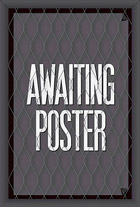
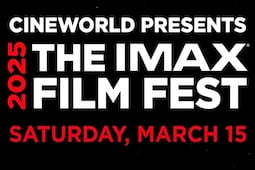
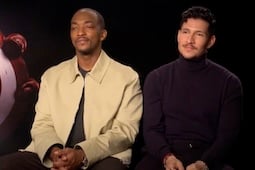

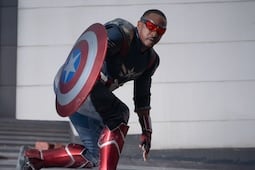
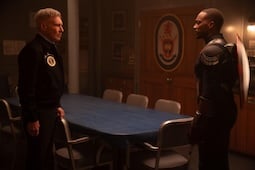

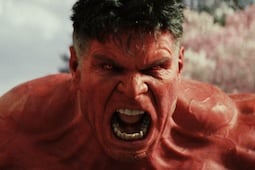
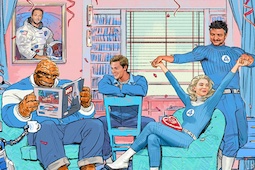
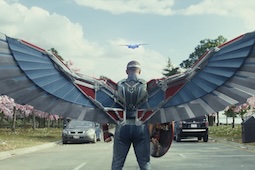




.jpg)
.png)






